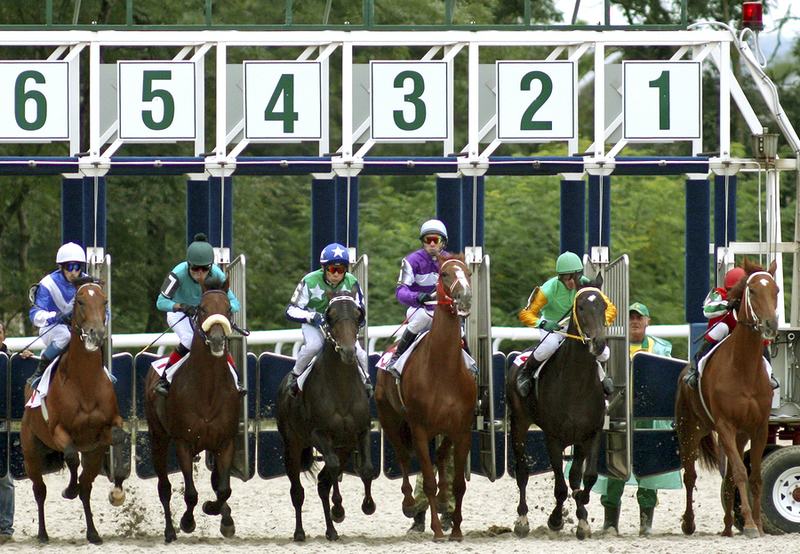 Every seasoned horse racing fan will be well aware of just how much of an impact the draw can have on a race – quite often the difference between winning and losing. It’s something which simply cannot be overlooked by serious punters determined to scoop up a net win.
Every seasoned horse racing fan will be well aware of just how much of an impact the draw can have on a race – quite often the difference between winning and losing. It’s something which simply cannot be overlooked by serious punters determined to scoop up a net win.
For those new to betting on the horses or anyone who is unfamiliar with the term ‘draw bias’, do not fear as we will explain exactly what it entails, why it exists, and why it can be so important to a horse’s chances of success.
What Does The Term Draw Bias Mean?
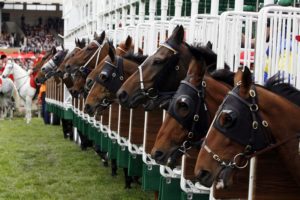
Draw bias in horse racing refers to the advantage or disadvantage present across the different stalls at a particular racecourse. These starting stalls (which go up in ascending order) each feature their own door which opens immediately as the race begins, ensuring all horses set off at the same time.
While occasionally talk of draw bias will focus on a specific stall number, it’s more common to see discussions revolve around ‘low’, ‘mid’ or ‘high’ draws. By grouping the different stalls together, you tend to get a more reliable picture of how prevalent the bias is.
If there is a bias in favour of low draw runners at a racecourse, this means that those starting from a low numbered stall have an advantage over the rest as demonstrated by their record in past races. Following a rule change in 2011, British racecourses joined the rest of the world in ensuring low numbered stalls are always beside the inside rail, regardless of whether it is a left- or right-handed track.
There is nothing a horse can do in order to obtain a favourable draw as stalls are chosen completely at random for all flat racing. In the event a horse withdraws from the race after the draw, that stall will remain empty rather than the other horses shifting down one place.
Draw Bias Terminnology

Anyone new to horse racing will likely find themselves scratching their head at much of the terminology commonly used within the sport and the betting that takes place on it. Fortunately, the area of draw bias isn’t overloaded with unusual terms but there are a couple of concepts we must introduce.
The first is not unique to a discussion of bias but is often used to indicate the importance of it. Return on investment (ROI) is a way of measuring how successful something, or in our case a particular draw, has been. A ROI of +10% indicates that an equal stake placed on all horses within that group e.g. high drawn, would hand you a 10% margin. A -30% ROI on the other hand means that if you bet £100 in total, you would end up with just £70 back.
ROI is a useful measurement when looking at draw bias because it shows just how horses have performed from a certain starting berth relative to expectations. This is where we get to see if bookies have done a good job of factoring the bias into their prices. The downside to it, however, is that the figures can be skewed by a couple of ‘freak’ results.
Perhaps more useful to us, therefore, is Impact Value (IV), a statistical index which shows if horses win more or less often than would typically be expected. The IV baseline figure is 1.00 and this shows us that a horse from a particular draw has, on average, performed no better or worse than they ought to have done.
A score between 0.9-1.1 is unlikely to be statistically significant, but as you move further from this range, it becomes harder to deny a course is in some way unfair, by which we mean biased in favour or against one draw or another. The beauty of IV is that it allows punters to instantly see which group of stalls are performing better than another and it also takes field size into consideration. A/E (actual/expected) figures work in a similar way but this is a less commonly used metric.
When To Look For Draw Bias?
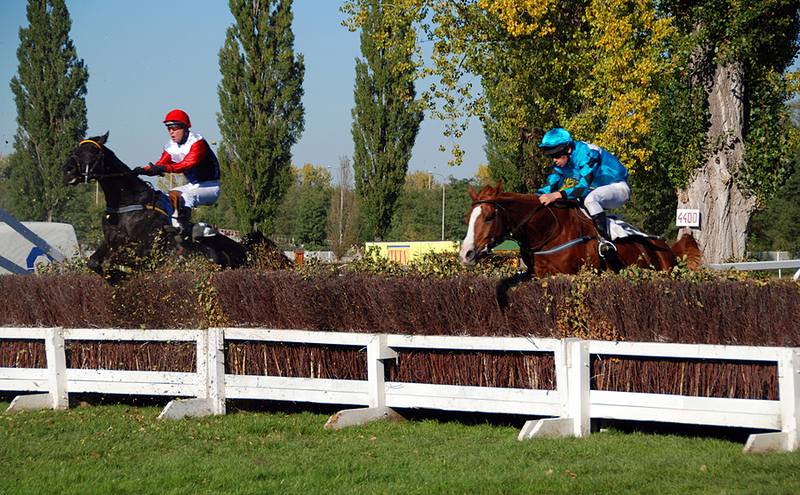
While we are keen to stress the impact draw bias can have, it is not something you always need to consider. National Hunt (jump) racing doesn’t use stalls, in part because the softer ground conditions that are common would make moving them very tricky. Even if jump racing were to use stalls though, it wouldn’t be something you would need to look at.
The minimum distance for a National Hunt contest is two miles, and at this length the draw has no real impact. Most research only finds credible evidence of draw bias up to around the one mile mark. Over distances any longer than this, and certainly in races double that length, horses usually have too much time to make up for any early disadvantage.
The other factor to consider is the number of runners in a race. In contests with few competitors, draw bias is unlikely to have any say of how things end up. When you begin to hit at least eight, or more commonly 10 runners, that’s when we see the significance of a high/low draw. Runners on either edge are now separated by a much greater distance and both can face distinctly different challenges as we shall now discuss.
Which Factors Produce Bias?
Rich in diversity, British racecourses truly come in all shapes and sizes. While some offer horses a fair test regardless of stall number, some come with a significant dose of unfairness.
Why does this happen?
There are a variety of reasons, including but not limited to: a difference in underfoot conditions across the track (caused by certain sections having better drainage than others), the presence of cambers or ridges and the position or sharpness of any bends. Even all-weather courses, which appear as fair as can be on the face of it, are not immune to course bias especially those that suffer from surface ‘kickback’ issues.
How Much Difference Can Draw Bias Make?
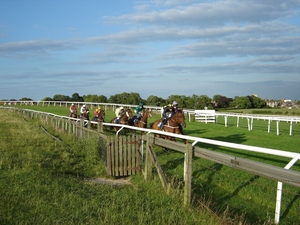
An optimal draw isn’t going to turn a donkey into Frankel, but at some places it can be worth a few lengths at the very least. There is a wide spectrum when it comes to draw bias strength with many racecourses only having a fairly mild bias, but others such as Chester or Thirsk proving incredibly stall-dependent.
To get a sense of just how big an impact bias can have, let’s take a look at 5f races at Beverley.
Between April 2010 and September 2019, in races with at least 10 horses, there were 91 low drawn winners, 92 mid drawn, but just 55 coming from a high stall. So horses drawn on the outside won around 60% as often as those inside them (in either section of the draw).
Do The Bookies Factor Draw Bias Into The Odds?
Bookmakers hardly miss a beat when it comes to horse racing so you wouldn’t see them ignoring the draw bias factor. They don’t account for it perfectly though, and can be liable to over or underestimating the strength the bias has.
One example of this can be seen using data taken from Haydock Park between May 2010 and September 2019. Horses drawn low in 6f races posted a -41% ROI (£331 loss on a £1 bet) compared to +7% ROI for mid-drawn horses (£65 net win on a £1 bet). Such a big difference, with such a large sample size, is certainly statistically important.
The draw is a difficult thing to price accurately for because different horses run better in different conditions while the bias itself can change by slightly altering the number of runners, or the going. Spotting when the bookies have failed to accurately account for the bias is not an easy job but over time the value becomes easier to see.
Things To Be Wary Of
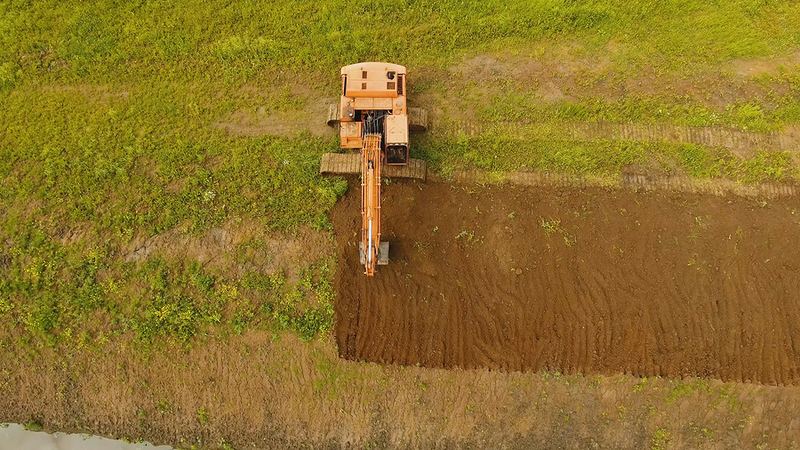
Past trends can give us a real sense of where any draw bias lies at a particular course, but there are a couple of potential pitfalls to watch out for. The biggest one, although not an overly frequent occurrence, comes when a racecourse has undergone track renovation work. This could include installing a new drainage system, levelling the surface, changing the position of the finishing post (and therefore the starting points), or changing the sharpness of the corners. Even a fairly minor looking alteration could potentially have a big impact on the extent of any draw bias with many races decided by fairly small margins.
Rather than renovating the entire track, on occasions, ground staff have been known to move the position of the rails. By doing so horses can end up racing on a stretch of grass with completely different characteristics, rendering past data bias fairly useless. They could also choose to centre the stalls, as opposed to putting them beside the inside rail, something which leads to the same issue.
Last of all, it is important you don’t look too simply at bias data. As mentioned, the weather and conditions underfoot, as well as the number of horses in a race, can have a big impact on how much of an influence the draw has. It is no use assuming that a course always favours a low draw, for example, if that only applies in five furlong races with at least 12 runners taking place on ground soft or heavier.
Final Remarks
We hope you have a greater understanding of all things draw bias after reading this piece. While knowing about stall advantages is undoubtedly a hugely useful weapon in the arsenal of any driven punter, it is far from the only factor to consider when weighing up your options.
Things such as jockey and trainer records, handicapping, course form, and distance experience cannot be ignored if you want to stand the very best chance of beating the bookies. More often that not, bias is a far smaller consideration than most of those, so it isn’t normally something you should give too much weight to.
